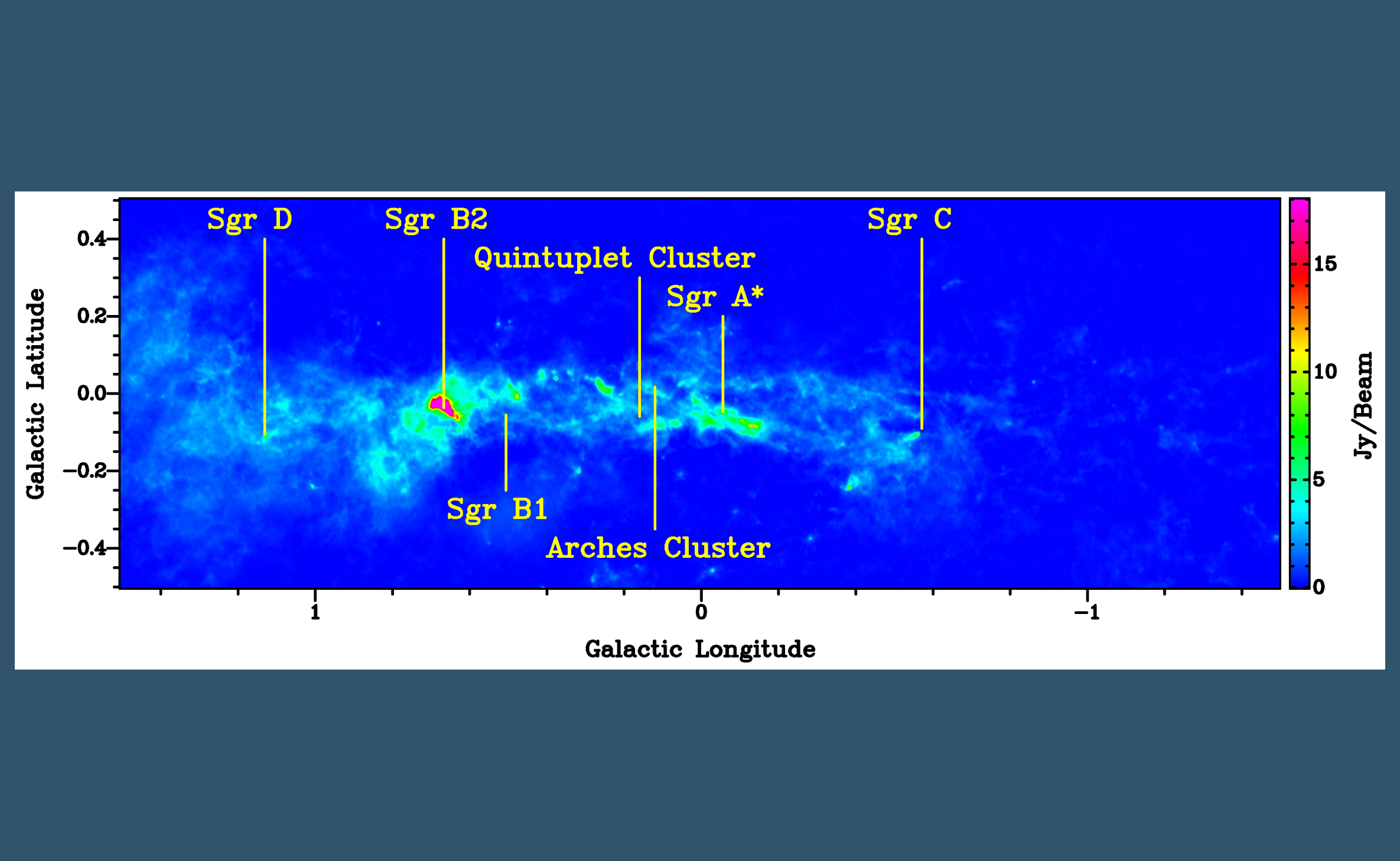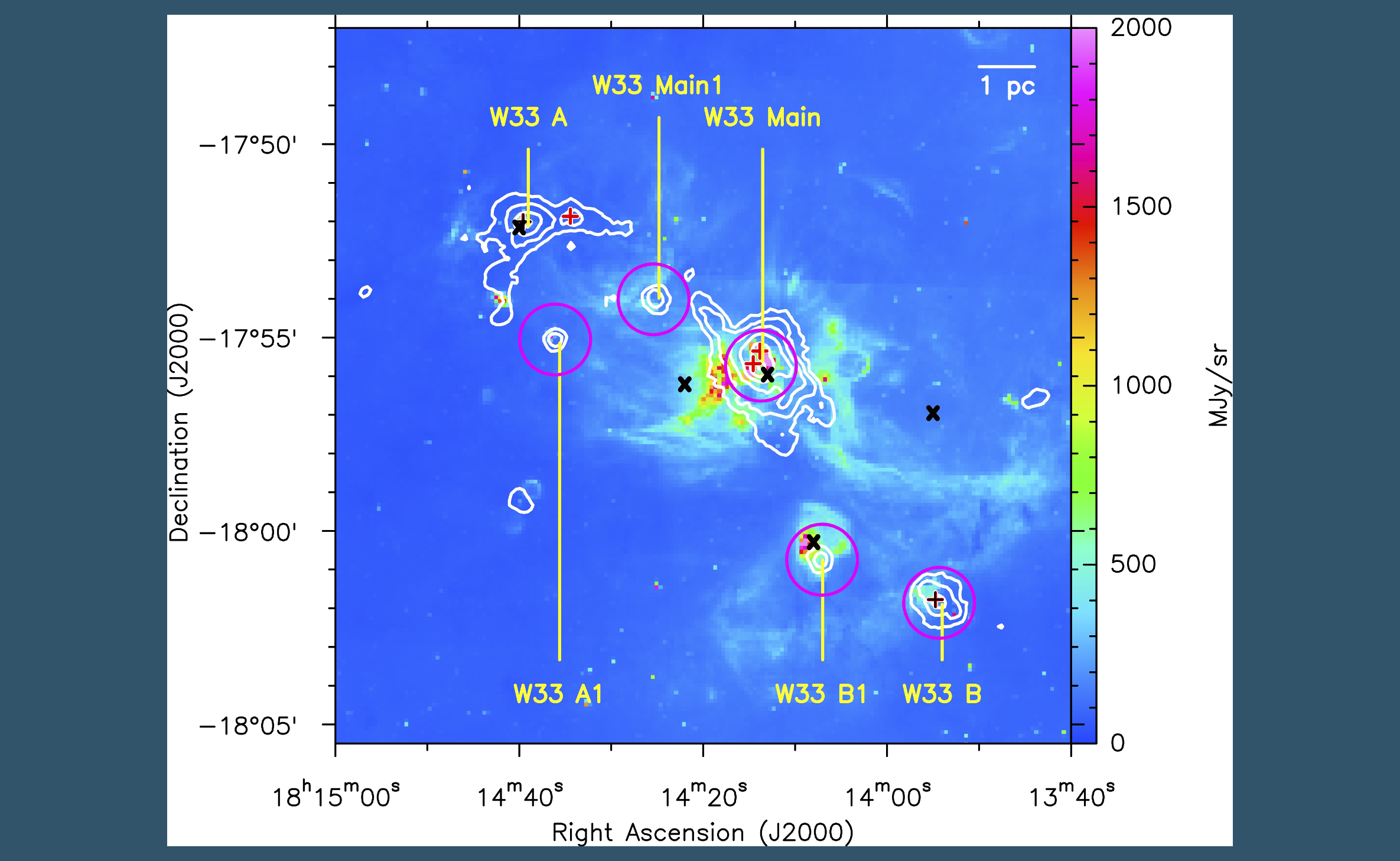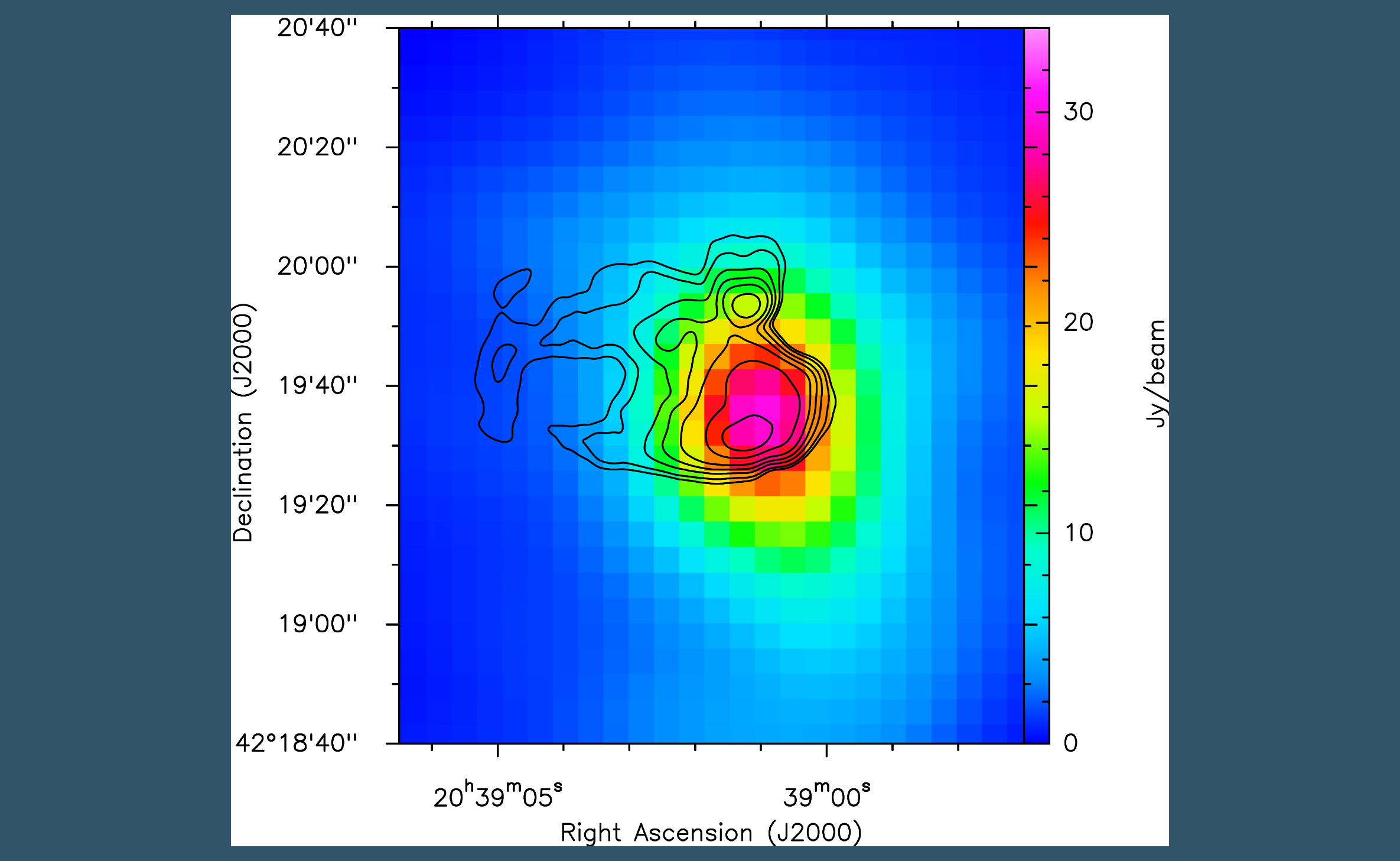
Central Molecular Zone
The central few hundred parsec of our Galaxy (|l|<1.5°, |b|<0.5°), the so-called Central Molecular Zone (CMZ), present an exceptional environment with extreme conditions in the Milky Way.
We used infrared observations to determine the star formation rate (which is a factor of ten lower than in the Galactic disk, Immer et al. 2012), submillimeter observations to measure the gas temperatures in seven clouds (which are probably heated by turbulence, Immer et al. 2016) and radio observations to search for HII regions as signs of star formation in the dust ridge (we found none towards the dust clouds, Immer et al. 2012).
Learn more

Scutum spiral arm
The Scutum (also called Scutum-Centaurus or Scutum-Crux) spiral arm is located in the inner Galaxy (from the Sun’s point of view), between the Sagittarius and the Norma arms. The Scutum arm was identified as strong condensations in neutral hydrogen and CO observations in longitude-velocity plots.
Observing maser sources in high-mass star-forming regions in this spiral arm over several epochs, we determined the distances and proper motions of these sources. Using a rotational model, we transformed the proper motions and line-of-sight velocities into peculiar motions. We found that many sources in this arm show unusually large peculiar motions (Immer et al. 2019).
Learn more

W33
Infrared, submillimeter, and radio continuum as well as maser observations of the high-mass star-forming complex W33 show that it contains regions at different stages of star formation, from quiescent clumps to developed HII regions.
With maser parallax observations, we determined the distance to four maser sources in the complex and concluded that the W33 clouds belong to the same complex despite their different line-of-sight velocities ( Immer et al. 2013).
We studied the chemistry of six W33 clouds along an evolutionary sequence from prestellar clumps to HII regions with submillimeter observations at two different resolutions and found that the chemistry on larger scales becomes more complex and diverse the more evolved the star forming region is. On smaller scales, the chemical complexity and diversity increase up to the hot core stage while in the HII region phase, the spectra resemble the spectra of the protostellar phase ( Immer et al. 2014).
Learn more

DR21
DR 21 is a thermal radio source, located in the Cygnus-X region. The star forming complex is famous for its very massive and powerful outflow. Two cometary H II regions are located in DR 21: a compact northern region and an extended southern region.
Observations of radio recommination lines towards DR21 revealed the presence of two velocity components in both HII regions which suggests that the ionized gas flows along cone-like shells, swept-up by stellar winds. The ionized gas down the tail of the southern HII region is redshifted by up to ~30 km s-1 with respect to the ambient molecular gas. The observed velocity structure of this HII region is most consistent with a picture that combines a stellar wind with stellar motion (as in bow shock models) along a density gradient (as in champagne flow models).
Learn more
Copyright © 2020 · All Rights Reserved · Home